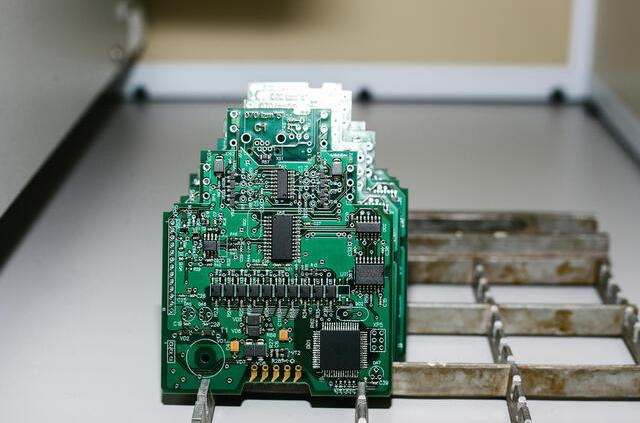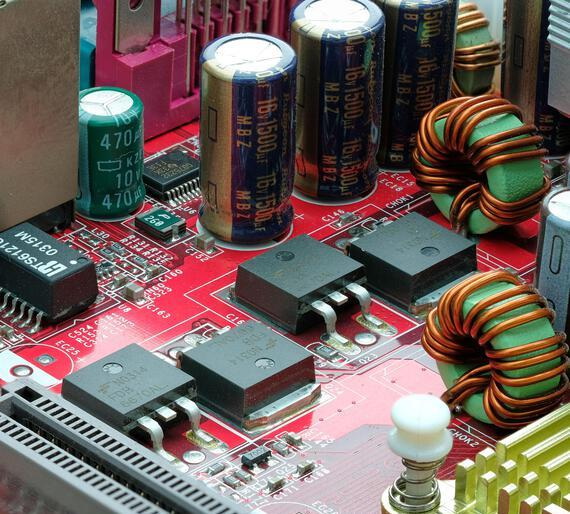Content Menu
● Understanding SMD Machine Use
● Essential Tools for SMD Machine Operations
>> 1. Soldering and Rework Stations
>> 2. Hot Air Guns
>> 3. Soldering Irons and Tips
>> 4. Tweezers and Component Handling Tools
>> 5. Solder Paste and Flux
>> 6. Stencils and Printing Equipment
>> 7. Pick-and-Place Machines
>> 8. Inspection Tools
>> 9. PCB Holders and Fixtures
>> 10. Software and Control Systems
● Additional Helpful Tools
● Best Practices for Using SMD Tools
● Conclusion
● FAQ
>> 1. What is the most important tool for SMD machine use?
>> 2. Can I solder SMD components without a rework station?
>> 3. How does solder paste application affect SMD assembly?
>> 4. Why is ESD safety important in SMD operations?
>> 5. What inspection tools are recommended for SMD work?
Surface Mount Device (SMD) technology is a cornerstone of modern electronics manufacturing, enabling compact, high-performance circuit assemblies. Mastering SMD machine operations requires not only technical knowledge but also the right set of tools to ensure precision, efficiency, and quality. This comprehensive article explores the essential tools necessary for mastering SMD machine use, covering everything from soldering equipment to inspection devices, and provides practical guidance for both beginners and professionals.

Understanding SMD Machine Use
SMD machine use involves the placement, soldering, and rework of small electronic components on printed circuit boards (PCBs). These components, often tiny and delicate, demand specialized tools and techniques for handling and assembly. The process typically includes solder paste printing, component placement by pick-and-place machines, reflow soldering, and inspection or rework operations.
Mastering these operations requires familiarity with both the machinery and the supporting tools that enhance precision and productivity.
The complexity of SMD machine use lies in the miniaturization of components and the high-density placement on PCBs. This means that even the smallest misalignment or soldering defect can cause circuit failure. Therefore, operators must not only understand the mechanics of the machines but also the properties of the components and materials involved.
Essential Tools for SMD Machine Operations
1. Soldering and Rework Stations
A high-quality soldering station is fundamental for SMD machine use, especially for manual soldering and rework tasks.
- SMD Rework Stations such as the Hakko 851 and Eclipse SS-969E provide precise temperature control (ranging from about 100°C to 540°C or higher) and adjustable airflow, which are critical for soldering and desoldering small surface-mount components like QFP, PLCC, and BGA packages.
- These stations often feature ESD-safe designs to protect sensitive components and include various nozzles to direct hot air precisely during rework.
- The ability to control temperature and airflow precisely prevents damage to the PCB and components, which is crucial when working with heat-sensitive devices.
- Advanced rework stations may also include vacuum pickup tools integrated into the hot air system to assist in removing components safely.
2. Hot Air Guns
Hot air guns are indispensable for reflow soldering and component removal. They provide controlled heating to melt solder paste or desolder components without direct contact.
- Professional-grade hot air tools offer adjustable temperature and airflow to prevent damage to components and PCBs during rework.
- A hot air gun is especially useful for multi-pin components and complex packages that require even heat distribution.
- When using hot air guns, operators must be skilled in directing airflow to avoid overheating adjacent components or lifting pads from the PCB.
- Some hot air guns come with interchangeable nozzles tailored for different component sizes and shapes, improving efficiency in SMD machine use.
3. Soldering Irons and Tips
For fine manual soldering, a soldering iron with a fine tip is necessary.
- Tips sized appropriately for small components (such as 0603 or 0402 sizes) allow precise soldering without bridging adjacent pads.
- Temperature-controlled soldering irons help maintain consistent heat, reducing the risk of overheating components.
- Popular soldering irons for SMD work include the Weller WE1010NA and the Metcal MX-500 series, known for their stability and precision.
- Using the correct solder alloy (such as lead-free SAC305 or traditional SnPb) and flux is equally important to achieve reliable joints.
4. Tweezers and Component Handling Tools
Handling tiny SMD components requires precision tools.
- ESD-safe tweezers with fine, sharp tips enable accurate placement and adjustment of components on the PCB.
- Additional tools like vacuum pickup pens can assist in placing components without direct finger contact.
- Magnetic tweezers, anti-static brushes, and component trays also aid in organizing and handling parts efficiently.
- Operators should choose tweezers made from materials that do not generate static electricity and that have ergonomic designs to reduce hand fatigue.
5. Solder Paste and Flux
Solder paste acts as both the solder and adhesive during the SMT assembly process.
- Applying solder paste accurately using stencils is critical before component placement.
- Flux improves solder flow and joint quality, particularly in manual soldering and rework.
- Different flux types (no-clean, water-soluble, rosin-based) are selected based on the assembly process and cleaning requirements.
- Proper storage and handling of solder paste are important to maintain its viscosity and prevent oxidation, which can affect solder joint quality.
6. Stencils and Printing Equipment
For mass production or precise solder paste application, stencils are used.
- A stencil printer deposits solder paste onto PCB pads through apertures, ensuring consistent solder volume and placement.
- The quality of the stencil and printing parameters directly affect solder joint reliability.
- Stencils are typically made from stainless steel or nickel and are laser-cut for precision.
- The thickness of the stencil and aperture design must be matched to the component size and PCB pad layout.
- Manual stencil printing is common in prototyping, while automated stencil printers are used in high-volume manufacturing.
7. Pick-and-Place Machines
Automated placement machines are central to SMD machine use in production.
- These machines pick components from feeders and place them accurately on the PCB, guided by vision systems and software.
- Operators need to understand machine interfaces, alignment, and calibration to optimize placement accuracy.
- Modern pick-and-place machines can place thousands of components per hour with micron-level precision.
- Feeding systems, nozzle types, and component orientation are critical factors influencing machine performance.
- Proper programming and maintenance of pick-and-place machines reduce downtime and improve yield.
8. Inspection Tools
Inspection is vital to ensure quality and detect defects early.
- Microscopes: Stereo microscopes or digital microscopes help inspect solder joints and component placement at high magnification.
- X-ray Inspection Systems: Used for inspecting hidden solder joints, especially in BGA packages.
- Automated Optical Inspection (AOI) machines scan PCBs for placement and soldering defects.
- Inspection tools help identify common issues such as solder bridges, tombstoning, insufficient solder, and misaligned components.
- Integrating inspection into the production line enables early defect detection and reduces costly rework.
9. PCB Holders and Fixtures
Stabilizing the PCB during soldering or rework prevents damage and improves accuracy.
- Magnetic base PCB holders or vises provide a stable platform for working on small boards.
- These holders often have adjustable arms and clamps to secure boards of various sizes.
- Some fixtures include heating elements to maintain PCB temperature during soldering, reducing thermal shock.
- Using holders also frees the operator's hands, allowing more precise manipulation of tools and components.
10. Software and Control Systems
Modern SMD machines are computer-controlled.
- Operators use software to load placement programs, control machine parameters, and monitor operations.
- Familiarity with software interfaces and troubleshooting is essential for efficient machine use.
- Software tools often include simulation and verification features to optimize placement sequences and reduce errors.
- Integration with inventory management and quality control systems streamlines production workflows.

Additional Helpful Tools
- Temperature Profilers: Measure and record temperature during reflow soldering to ensure proper thermal profiles.
- Solder Wick and Desoldering Pumps: For removing excess solder or correcting solder bridges.
- Anti-Static Mats and Wrist Straps: Protect components and operators from electrostatic discharge.
- Lighting: Proper illumination is crucial for visibility during manual soldering and inspection.
- Cleaning Tools: Isopropyl alcohol, brushes, and ultrasonic cleaners remove flux residues and contaminants.
Best Practices for Using SMD Tools
- Always verify temperature settings on soldering and rework stations to match component specifications.
- Use ESD-safe tools and workstations to prevent damage to sensitive components.
- Regularly calibrate and maintain machines and inspection equipment.
- Use magnification tools to ensure precise placement and soldering.
- Follow safety guidelines when handling hot tools and chemicals.
- Keep a clean and organized workspace to minimize errors and component loss.
- Document and standardize processes to ensure consistency across operators and shifts.
- Continuously update skills and knowledge about new tools and materials in SMD machine use.
Conclusion
Mastering SMD machine operations requires a comprehensive toolkit that includes soldering and rework stations, hot air guns, precision tweezers, solder paste application tools, inspection devices, and software controls. Each tool plays a critical role in ensuring the accuracy, efficiency, and quality of surface mount assembly. By equipping yourself with the right tools and developing proficiency in their use, you can achieve superior results in SMD machine use, whether in a hobbyist setting or a professional manufacturing environment.
The integration of these tools with best practices and continuous learning will empower operators to handle the complexities of modern electronics assembly and meet the demanding standards of today's technology markets.

FAQ
1. What is the most important tool for SMD machine use?
The most important tool depends on the task, but generally, a temperature-controlled soldering or rework station is essential for precise soldering and desoldering of surface mount components.
2. Can I solder SMD components without a rework station?
Yes, small SMD components can be soldered manually using a fine-tipped soldering iron and tweezers, but a rework station with hot air capabilities significantly improves efficiency and quality.
3. How does solder paste application affect SMD assembly?
Solder paste acts as both adhesive and solder during assembly. Accurate application via stencils ensures proper solder volume and joint reliability, making it a critical step in SMD machine use.
4. Why is ESD safety important in SMD operations?
ESD (Electrostatic Discharge) can damage sensitive electronic components. Using ESD-safe tools and work environments prevents such damage, ensuring component integrity.
5. What inspection tools are recommended for SMD work?
Stereo microscopes or digital microscopes are recommended for visual inspection, while AOI and X-ray systems provide automated and hidden solder joint inspection, respectively.




















